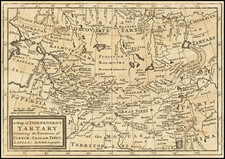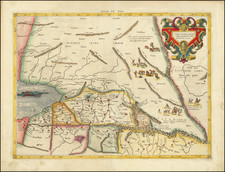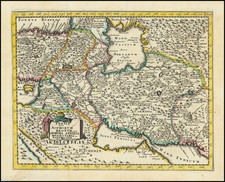Striking view of Ispahan (Isfahan), then the Capital of the Kingdom of Persia.
Vander Aa's view shows Isfahan at the end of its greatest era.
Isfahan is located on the main north-south and east-west routes crossing Iran, and was once one of the largest cities in the world. It flourished from 1050 to 1722, particularly in the 16th century under the Safavid dynasty, when it became the capital of Persia for the second time in its history.
In the 17th and early 18th Century, Isfahan was very famous in Europe, and many European travellers made an account of their visit to the city. This lasted until the city was sacked by Afghan invaders in 1722, during the Safavids heavy decline. Isfahan declined once more, and the capital was subsequently moved to Mashhad and Shiraz, during the Afsharid and Zand periods respectively, until the capital was finally settled in Tehran in 1775 by Agha Mohammad Khan, the founder of the Qajar dynasty.
Isfahan is famous for its Persian-Islamic architecture, with many beautiful boulevards, covered bridges, palaces, mosques, and minarets. This led to the Persian proverb "Esfahān nesf-e- jahān ast" (Isfahan is half of the world).
Pieter van der Aa (1659-1733) was a Dutch mapmaker and publisher who printed pirated editions of foreign bestsellers and illustrated books, but is best known for his voluminous output of maps and atlases. Van der Aa was born to a German stonecutter from Holstein. Interestingly, all three van der Aa sons came to be involved in the printing business. Hildebrand was a copper engraver and Boudewyn was a printer.









![Tabula IX Asiae [Pakistan & India] (Title on Verso)](https://storage.googleapis.com/raremaps/img/small/49098.jpg)
![Russian Empire [with] Chart of the Communication Between The Archipelago And Black Sea](https://storage.googleapis.com/raremaps/img/small/64013.jpg)



